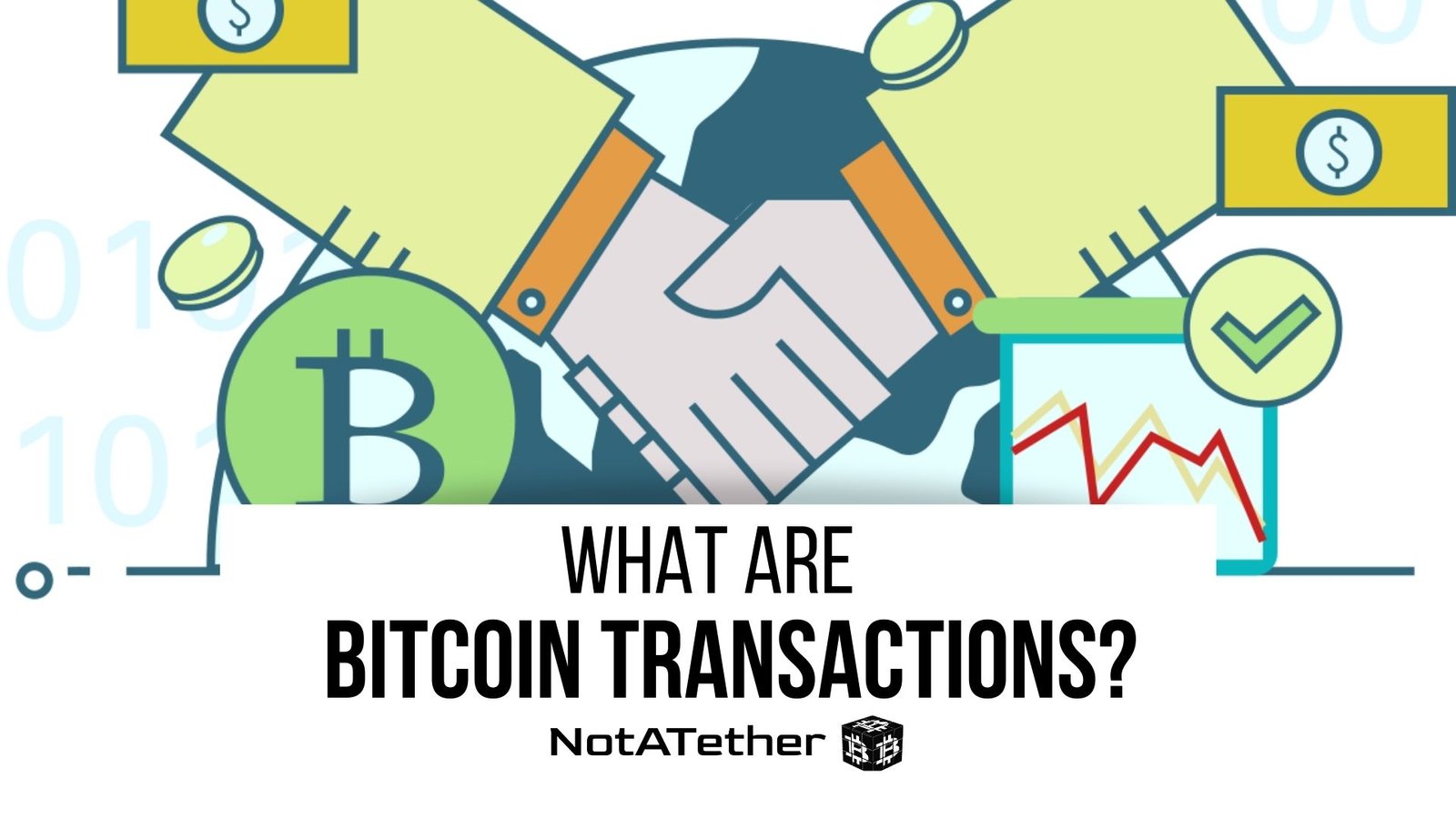Bitcoin Transactions Explained: A Basic Beginner’s Guide
Bitcoin transactions are the quickest, easiest and least expensive way to send money, with a transaction typically taking less than ten minutes. Furthermore, there are no international transfer fees and no need for a bank account.
This is a payment method that is easier for everyone to use, irrespective of their geographical location or personal circumstances. For example, if you receive your salary in Bitcoin you can send it as easily as you would with any other currency. This is not possible with any other currency because there might be restrictions on how much of their income they can transfer out of the country each month.
In some countries where traditional banking services are not available or too expensive for ordinary people, Bitcoin could be a good alternative as there’s always going to be someone willing to trade something online for Bitcoins.

What are Bitcoin Transactions?
Bitcoin is a digital currency that can be used to purchase goods and services worldwide. Transactions are verified, recorded, and added to the blockchain by Bitcoin miners.
Bitcoin transactions are payments made using the digital currency Bitcoin. A transaction typically involves transferring money from one person or entity to another over the internet, although it can also involve sending other types of data directly between two people or entities without an intermediary company.
Bitcoin Transaction Fee
This section is about how to calculate Bitcoin transaction fee. It’s important that the fee is calculated correctly in order for the transaction to be processed in a timely manner.
Bitcoin transaction fees are determined by the size of the transaction data, not the value of Bitcoin. Bitcoin wallet apps are commonly used to calculate this fee, but there are other calculators available online.
Bitcoin transaction fee is a small amount that one miner gets in every block and it’s calculated based on the size of the transaction and the number of transactions. For example, if there are 10 transactions in a block and each one has 1KB size, then each miner will get 0.1 mBTC (10*0.001) for mining this block (1 mBTC=0.001 BTC).
The fee system was introduced to prevent spam transactions from polluting the blockchain and to encourage miners to include more high-fee transactions into their blocks in order to maximize profits.
The fees are calculated by comparing the size of the transaction in bytes with the transaction’s needs. The larger the size of a transaction, the higher fee will be required to process it on time.
The biggest reason why transaction fees are high is because of the service that they provide. When a transaction is sent, they need to make sure that it gets to its destination as fast as possible. In order to do this, the network has to make sure that enough miners are available at any given time. This means they have to charge those who use their service more money in order to compensate those who allow
How Bitcoin Transaction Confirmation Works
Bitcoin transactions are broadcast to the network, which then propagates the transaction to all nodes
Every Bitcoin transaction is broadcast on the Bitcoin network. The concept of broadcasting a transaction means that it has been sent to nodes connected on the Bitcoin network. When a node receives a new transaction, it checks all inputs for validity and calculates the fee, if any. If everything looks good, it sends out this transaction so other nodes can verify it.
Bitcoin transactions are accepted to be confirmed when they are included in a block. For each block, there is a fixed amount of time that is needed for the transaction to be confirmed. The longest amount of time it can take for one transaction to be confirmed is 10 minutes.
The number of unconfirmed transactions has grown significantly over the past few years, this has led to an increase in Bitcoin’s fees and confirmation times.
The recommended fee size per byte (in satoshis) for high priority transactions is 125 and it varies depending upon the network congestion.
Steps for Wallet Software to Create a Raw Transaction
You need a crypto currency wallet to sign a Bitcoin transaction with a password/ private key.
So, first you need to generate a pair of keys. One is your public key and the other is your private key. This process is called “wallet generation” (referred to as “creating”). You can use various tools or websites for this.
Once you have generated the keys, you will be given the opportunity to create the seed phrase which is used by your wallet software when it needs to recover your wallet in the future (this process is called “seeding”). It should be noted that this seeding phrase must never be shared with anyone or they will have access to all of your bitcoins in that wallet.
The steps for wallet software to create a raw Bitcoin transaction are as follows:
- Create or Import Private Key
- Create or Select Outputs Amounts
- Create or Select Inputs Amounts
- Sign Transaction with Private Key
- Reset Transaction Type to Raw
By following a few simple steps, you can create a Bitcoin transaction of your own. This is a payment system that allows you to send and receive bitcoins from other people. A transaction is created by spending some of the bitcoins from your wallet and sending them to someone else.


